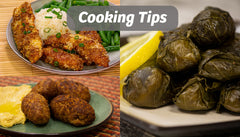
The science behind great cooking is key to creating delicious dishes. There are five flavours that our bodies recognize. You can then use them in different ways to create delicious dishes. You may find some dishes that use all five, others just one or two. For the best results, be sure to constantly taste your food and adjust any flavors you may have before cooking. Seasoning your food correctly is also an important skill to develop. This article will focus on some of the methods and ingredients that can increase flavor and umami.
Science behind the food taste
You are not the only person who is curious about why certain foods taste more delicious than others. Scientists are studying how the brain works and are actively trying to discover more receptors that can detect food flavors. Proteins in other foods, such as proteins found in meats, also have a role to play in flavoring food and making it more appealing. It is a combination a number of chemical properties that create the taste of food. This complex process is what gives rise to the delicious flavor. The first step is to smell and taste the food. Next, enzymes in your saliva process the food. The next step in the tasting process is moving the food over the tongue's papillae, which are tiny bumps that contain about 50 to 100 taste cells. Each taste receptor is a chemical receptor that converts taste into taste. This is known as "flavor perception".
Flavor enhancers:
Good cooks are aware of how to add flavors to their dishes. They have favorite condiments, produce section staples, and spice blends that they keep in their pantry. These items can simplify the cooking process, increase flavor, and reduce preparation time. These ingredients are the basis of delicious meals. Here are some of my favorite recipes:

Techniques for enhancing flavour
The best dishes emphasize the layers of flavour in the ingredients. This is accomplished through the use of different techniques, including adding flavours to food before it cooks and adding them to the final product. Each step adds depth and flavor to the dish. If you skip one step, all the others will be less effective. The addition of salt before cooking can counterbalance the sweetness of an ingredient and enhance its natural sweetness.
Ingredients that increase umami
Umami isn't a characteristic of Chinese cuisine. It can be found almost anywhere, but is not exclusive to Asian food. Glutamate, an amino acid, gives the flavor. Although monosodium glutamate has a bad reputation, it is an ingredient that is safe for cooking. Monosodium glucose is an amino acid naturally found in foods. The U.S. Food and Drug Administration (FDA) considers it a safe ingredient.
Flavors that enhance bitterness
Bitter ingredients can work together in cooking. For example, bitter chocolate is often more delicious than milk chocolate, which lacks the contrast between its sweetness and bitterness. Salt can reduce bitterness in desserts. You might want to try salting bitter ingredients. Here are some tips to balance bitterness when making dishes.

FAQ
What ingredients do I need to purchase to cook?
You don’t always need to buy the ingredients. You can buy premade sauces or other items at most grocery stores. Premade meals are an option if you're looking for a way to save some money.
Can you learn to cook on your own?
Yes, you can be a self-taught cook! Everyone loves cooking, regardless of whether they are skilled or not. If you're interested in learning how cook at home, then start cooking. Start small, such as making pancakes for breakfast and spaghetti sauce at dinner. Experimenting with new recipes is the best way to learn to cook. You might even make some mistakes.
The time it takes to learn to cook can vary from just a few hours up to several weeks, depending upon your skill level. It's important to remember that cooking isn't just about following recipes. There are many ways of cooking food. So if you have an idea for a recipe, use it.
Where can you buy high quality kitchen equipment
You can buy high-quality kitchen gear online. There are many online shops that sell all sorts of kitchen tools. Be sure to read customer reviews before you buy any kitchen equipment. If you have similar items to purchase, ask your friends and family if they would recommend them.
How do you learn to cook the best?
Cooking should be something everyone can do. You'll miss out on delicious meals if your skills are not up to par. The first thing you need to do when learning to cook is to find a recipe that you like and follow it closely. Next, practice making small changes until you are comfortable cooking the dish. Try cooking for others. This will allow you to improve your cooking skills and test your abilities.
Do I need special equipment to cook?
It doesn't take any special equipment or tools to learn to cook. However, the right tools can make it easier to cook. You could, for example, use a spoon to make pasta or a whisk to whip the egg whites into stiff peaks. Having the right tools can make cooking less daunting and allow you to get started faster.
Is there a difference in a chef and a cooker?
A chef prepares food to be served to others. A cook prepares meals for others. Both jobs require the preparation of food. However, chefs work directly with their customers. They may need to make decisions about what they will serve to their guests based upon their preferences. The cook does not have to interact directly with customers. Instead, they ensure that the food tastes delicious before they serve it to others.
Statistics
- In the United States, the category is estimated at $23.2 billion annually and is growing faster than the market. (washingtonpost.com)
- On average, chefs earn $58,740 a year, according to the BLS. - learnhowtobecome.org
- The median pay for a chef or head cook is $53,380 per year or $25.66/hour, according to the U.S. Bureau of Labor Statistics (BLS). (learnhowtobecome.org)
External Links
How To
How to make an Apple Pie
The process of making an apple pie consists of several steps. First, wash the apples. Next, peel them and then cut them into small chunks. Then you add sugar, cinnamon, cloves, and lemon juice. Mix everything together, then bake for 15 minutes at 350F. The apple mixture should be removed from the oven and allowed to cool. Next, add some cream. Finally, sprinkle some powdered salt on top and serve.